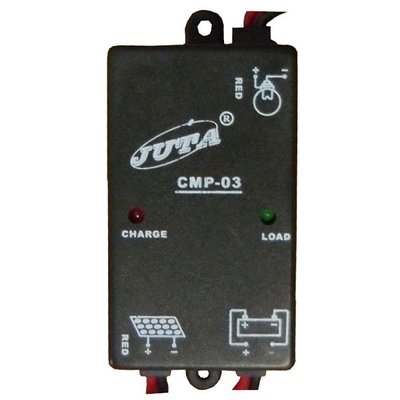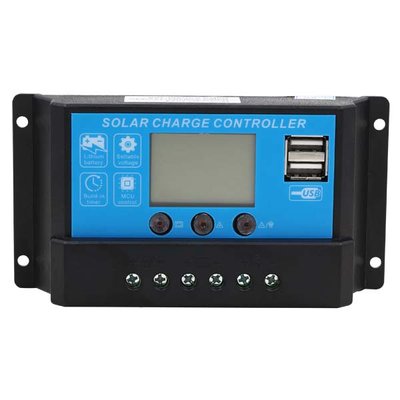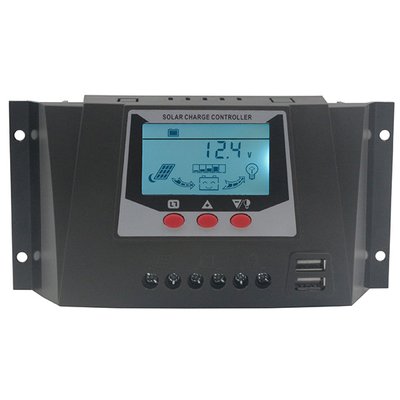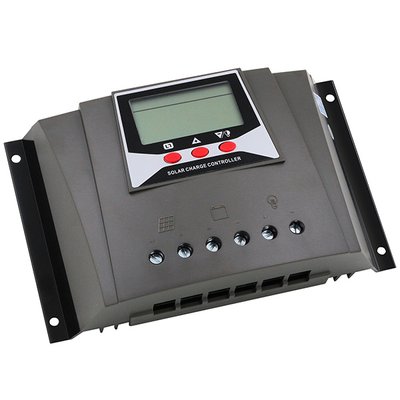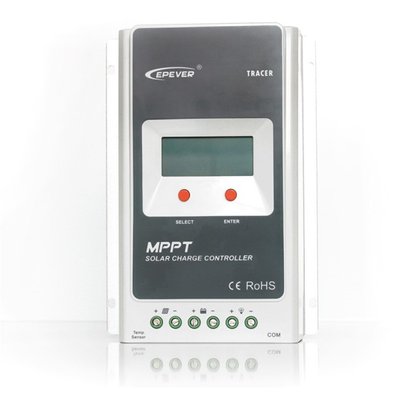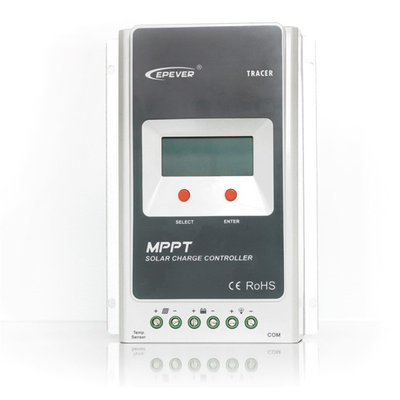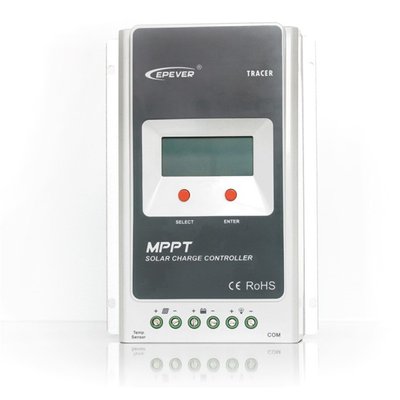|
Quantity
|
Out of stock
|
||
|
|
|||
Charge controllers
Recently, alternative sources of electricity have become increasingly popular. This is due to an increase in electricity tariffs and a conscious attitude towards the environment. Solar batteries “collect” photons using photopanels and convert the sun’s energy into electricity, which is stored in a battery. To extend the life of the eco-installation and obtain electricity of the highest quality, it is worth purchasing charge controllers. These devices not only protect the battery from overcharging, but also protect the device from short circuits.
Efficient energy management: charge controllers for optimal charging
The solar system can be started without such a component as a regulator. But in this case, the service life of the battery and photo panels is significantly reduced due to the uncontrolled supply of current. To extend the life of the eco-battery, it is recommended to buy a battery charge controller. When choosing a device, pay attention to the following characteristics.
- Charging voltage range and rated current. If you want to purchase regulators for batteries using an alternative energy source, make sure that their parameters meet the requirements of an eco-friendly installation .
- Type. There are 2 categories. PWM (Pulse Width Modulation) models maintain optimal voltage levels and regulate current. MPPT ( maximum power point tracker ) is an improved version of PWM models, taking into account the maximum possible power of the panel in a given unit of time.
- Operating temperature. The parameter indicates in what temperature range the charge controller remains operational. For example, JUTA DY1024 can withstand temperatures from -35 to +60 degrees.
Modern models have additional features for practical use. For example, the device can be equipped with USB sockets for charging phones and other gadgets.
Maximize Performance: The Role of Charge Controllers in Solar Systems
To protect the eco-installation from breakdowns and increase its performance, charge controllers for solar panels are required. They perform several functions.
- Overload protection. After the battery is fully powered , the supply of electricity from the solar panels is stopped or supplied in metered amounts. Overloads dry out the electrolyte and shorten the service life.
- Preventing deep discharge. Charge controllers disconnect consumers connected to the battery. Prevents electricity from flowing from the battery to the panel when there is no sun. Frequent discharges to critically low levels degrade battery capacity.
- Prevents reverse polarity when connecting panels.
- Short circuit protection. This is an important function that protects not only the installation itself, but also the consumers connected to it. The safety of using an eco-installation increases significantly when a regulator is connected.
- Converting excess power into ballast load.
- Final voltage adjustment. The device controls the final voltage, preventing sudden surges that can lead to equipment breakdown and short circuit.
This device makes the use of the system in the light of our luminary safe and extends the service life of all components.
In the Etsenergy store you can purchase charge controllers for solar panels at competitive prices. Products from Epsolar and JUTA manufacturers are manufactured in accordance with quality standards and are suitable for the most modern alternative energy systems. You can order goods by phone or on the website with delivery by Nova Poshta.
Types of charge controllers and their features
It is impossible to imagine a modern solar station without such an element as a charge controller. This device serves as a connecting element that connects the battery and the panel into one circuit, regulating the flow of current and providing protection against deep discharge.
There are units on the market that operate on two technologies: PWM and MPPT. For a user who is encountering the conversion of solar energy into electricity for the first time, these abbreviations, which can be found in product characteristics, do not mean anything. To choose a unit with exactly the technology you need, you need to understand the key technical nuances.
- PWM Aka PWM or pulse width modulation. At its core, it is an electronic switch that equalizes the voltage of the panels and the battery. Automatically reduces voltage when it reaches the maximum level. First, charging is performed at maximum power. Next, the current supply level for all batteries connected into one system is stabilized. The final stage - by reducing the voltage, the entire battery network is fully charged. Suitable for small systems in the temperature range from -45 to +75 degrees.
- MPPT. Or, in other words, tracking the maximum power point. A sophisticated technology that records the most efficient panel voltage and current values at which the PV panel produces peak power. After analyzing the data, solar charge controllers change the current, so it is possible to charge the storage device with a lower nominal voltage than the PV module . For example, a 12V energy storage device can be charged from a 48V module. MPPT technology is often used for large modules (eg 300W). It is effective for cloudy days with a lack of solar radiation, the winter season and short daylight hours, extreme temperatures below -45 or above +75 degrees.
When deciding which charge controllers for solar panels to buy, focus on the characteristics of the solar station, weather conditions and temperature. Take into account the time of year, because the activity of the Sun depends on it.
Setting up and optimizing the operation of the charge controller
Modern charge controllers are equipped with useful functions that optimize the operation of solar stations: protection against overloads and short circuits, control of overcharging and discharging, and reverse polarity protection.
In order for the unit to perform its functions correctly, it must be connected correctly. This process consists of several stages.
- Connecting the device to the photomodule . The maximum voltage is fixed.
- Connecting the device to the battery, determining its voltage and adjusting charging parameters.
- Subsequent connection of the inverter.
To ensure that the battery charge controller works correctly, carry out the connection steps in accordance with the instructions. The device settings are adjusted using a screen that displays parameters.
By adjusting the charging level, you extend the life of the entire system, protect it from overvoltage and short circuits. For example, lithium drives are afraid of overcharging and overvoltage, so they cannot be charged without monitoring the charging, otherwise you risk damaging them. By purchasing charge controllers from the Etsenergy online store , you maintain the functionality and productivity of your expensive solar system, protecting the energy storage device from unexpected breakdowns.
































